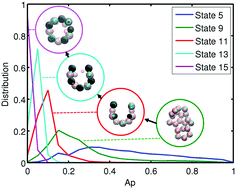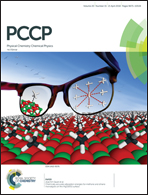Improving the productivity of monodisperse polyhedral cages by the rational design of kinetic self-assembly pathways†
Abstract
Hollow polyhedral cages hold great potential for application in nanotechnological and biomedical fields. Understanding the formation mechanism of these self-assembled structures could provide guidance for the rational design of the desired polyhedral cages. Here, by constructing kinetic network models from extensive coarse-grained molecular dynamics simulations, we elucidated the formation mechanism of the dodecahedral cage, which is formed by the self-assembly of patchy particles. We found that the dodecahedral cage is formed through increasing the aggregate size followed by structure rearrangement. Based on this mechanistic understanding, we improved the productivity of the dodecahedral cage through the rational design of the patch arrangement of patchy particles, which promotes the structural rearrangement process. Our results demonstrate that it should be a feasible strategy to achieve the rational design of the desired nanostructures via the kinetic analysis. We anticipate that this methodology could be extended to other self-assembly systems for the fabrication of functional nanomaterials.



 Please wait while we load your content...
Please wait while we load your content...